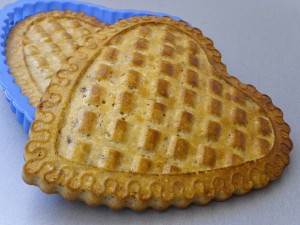What is Gluten Free?
 A gluten-free diet is a diet that excludes foods containing gluten. Gluten is a protein complex found in wheat (including Kamut and spelt), barley, rye, and triticale. Corn and rice also contain gluten but are considered gluten-free, as the gluten in these species does not cause celiac disease. A gluten-free diet is the only medically accepted treatment for celiac disease the related condition dermatitis herpetiformis, and wheat allergy, but not gluten allergy. (http://en.wikipedia.org/wiki/Gluten_Free)
A gluten-free diet is a diet that excludes foods containing gluten. Gluten is a protein complex found in wheat (including Kamut and spelt), barley, rye, and triticale. Corn and rice also contain gluten but are considered gluten-free, as the gluten in these species does not cause celiac disease. A gluten-free diet is the only medically accepted treatment for celiac disease the related condition dermatitis herpetiformis, and wheat allergy, but not gluten allergy. (http://en.wikipedia.org/wiki/Gluten_Free)
Gluten-free living is becoming more popular. As with most popular things, the industry starts providing products to fill your every need. BEWARE… most gluten-free products at the market are not any healthier. You have to educate yourself or you will fall into the marketing trap.
So why go wheat-free?
Living gluten-free is removing all whole wheat products from your diet. This is a bigger undertaking than it seems, as we all think okay no more bread. It is much more in-depth than that and you will learn all about where wheat is and why we need to find alternatives when reading Wheat Belly.
Our gluten-free journey began with reading Wheat Belly. You should read it before applying the gluten-free products to your cupboards. Study up on the effects of gluten and know what you are taking on before jumping into it too quickly. It takes great discipline and planning. It is, however, achievable. The internet and blogs with recipes make it so much easier. Just remember just because a package says gluten-free does not mean it is good for you.
One of the issues with gluten is it has been added to many food additives so finding true gluten-free foods without some research will leave you scratching your head thinking there is nothing gluten-free. It is not true but in a normal grocery store, it will appear that way.
You will be cooking more and baking more if you want to “replace” the bread in your current menus. I am not a baker. It is a struggle for me to replace bread and just easier to remove it from our diets. While this may work for some who will eat protein, vegetables, and fruit, many will struggle without some sort of substitute for your favorite items.
So, what can be made gluten-free? Really, just about everything. You can learn new ways to prepare foods that will help you immensely in changing pancakes to gluten-free, cookies, cakes and just bread for a sandwich.
The best thing you can do is study, learn, and make a plan. You will need to plan out ingredients and do some prep work. Once that part is done, switching to gluten-free will be a much easier transition.
Here are some tips to get started.
1. Purchase Wheat Belly (Click HERE)
2. Buy the ingredients you will need to bake.
3. Make a list and plan to bake ahead of time to make it more time manageable.
4. Plan to spend more time in the kitchen.
5. Plan other gluten-free foods and keep them easily accessible. Cut up fruits, veggies, pre-cook proteins.
Here is a tip example: On Sunday I will blend up a dozen eggs with salsa and cook up sausage and put in bowls in the fridge ready for easy omelets. This prep time will save you precious minutes during the week and you can have an omelet from pan to plate in under 5-10 mins. Eggs are great staple proteins. They are filling and help you stay full for hours. They are one of my favorite proteins for my family. The egg yolks are also great for cleansing the liver.
One thing you will learn quickly is how much easier it is to eat wheat products. Once you read Wheat Belly you will see why you should make the effort to transition you and your family from the traditional wheat products.
There are some great gluten-free alternatives:
1. Amaranth
2. Buckwheat
3. Quinoa
4. Almond flour
5. Coconut flour
* A little note on coconut flour, get familiar with coconut flour websites for recipes. Coconut flour requires less flour and more liquids. The one thing I have learned is that you can pretty much make anything you currently eat with traditional whole wheat with alternative ingredients. The more time you study which one to use, you will get better at using the right replacement to get a taste you and your family will enjoy.
Links to Websites that will help!
1. Maria Emmerich- I like her Pinterest account.
2. Civilized Caveman- website
3. Elana’s Pantry- Cooking with Almond Flour
4. Wheat Belly Blog
A recipe for Coconut Bread:
Coconut Flour Bread
NourishingDays.Com
Ingredients
- 6 eggs
- 1/2 cup melted coconut oil or butter
- 1-2 tablespoons honey (optional, I usually leave it out)
- 1/2 teaspoon sea salt
- 3/4 cup coconut flour
Directions
- Mix all ingredients together and pour into a small buttered loaf pan. Bake at 350 degrees for 40 minutes.
- Turn the loaf out and cool completely on a rack before serving. That’s it! Enjoy.



Thanks for the information!